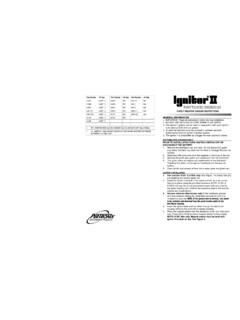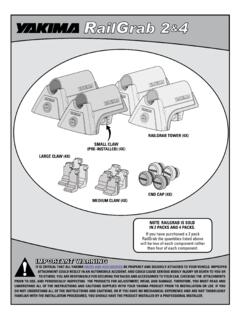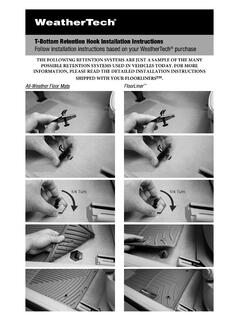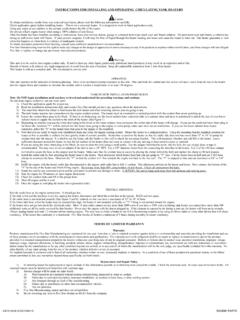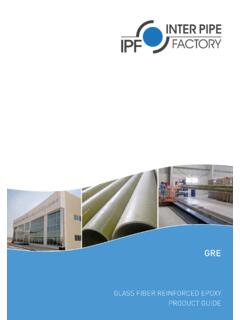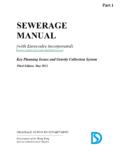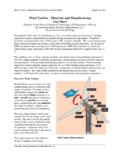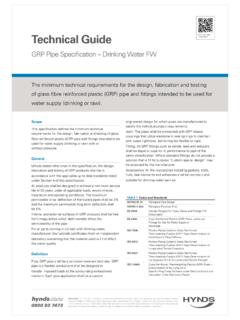Transcription of Basic Fiberglass Preparation Process Before Painting
1 Basic Fiberglass Preparation Process Before PaintingFiberglass is a type of plastic that is impregnated with small glass fibers for reinforcement (it is also known as GRP, for glass - reinforced plastic or FRP for Fiberglass reinforced plastic). Fiberglass is lightweight, strong in both compression and tension, and easy to mold into intricate shapes. It was first introduced in the aircraft industry, and has since gained wide acceptance as a material for boat hulls, car bodies, and even residential construction. The special properties of Fiberglass make it a bit tricky to sand into shape, and learning how to sand Fiberglass requires a lot of preparatory work and patience.
2 Fiberglass parts are almost never ready for paint when they you are working with a new Fiberglass component, it will have a thin layer of gelcoat on its surface. Gelcoat is an epoxy or resin-based compound that is used to line the molds when making Fiberglass components. The purpose of the gel coat is mainly to be a separation layer so the part will pop free from it's mold during manufacturing. However the gel coat also serves as the base surfacing layer on the Fiberglass product. Gelcoat often can have waviness as well as small pin holes that need to be addressed Before it can be the Fiberglass components, if applicable. If your project consists of multiple Fiberglass components (like the body, doors, and hood of a car), assemble them Before sanding or finishing.
3 This will allow you to sand continuously between each component, creating a smooth, consistent the seams are all of proper gap and fitment the items can be taken back apart. You always want to verify the fitment and panel gaps Before proceeding to paint the entire Fiberglass component with a wax and grease remover. Using this product is especially important when working with a new Fiberglass component, as it is necessary to remove the release agent the substance used to pry the component loose from its mold. Wax and grease remover can be purchased from automotive parts left over wax or grease can contaminate your finish when it comes to paint so this is a very important and critical step to get the Fiberglass using a coarse-grit sandpaper.
4 For the first sanding pass, use either 120 or 180-grit sandpaper. Mount the sandpaper to a long sanding board for large, flat components. For smaller areas or areas with intricate curves, a rubber sanding block works well to follow the shape of the sand all the way through the gelcoat into the Fiberglass itself. This causes 2 problems: it weakens the strength of the component, and it creates holes in the Fiberglass that allow it to rupture through the paint gelcoat can be used as a guide during the initial sanding. Sanding the gelcoat just enough will make its appearance dull, so when the entire component has lost its shine, you have sanded enough to allow the primer or paint to square millimeter of the finish to be painted will require sanding and prep any low spots in the Fiberglass .
5 To raise the profile of low spots in the surface, use a Fiberglass glazing putty. Work the putty into the low spot, and then sand it away until the area is flush with the rest of the the part has been fully sanded the blemishes will be more apparent. This step will require multiple stages of sanding and filling until the surface is true and free of any defects such as pin holes, surface waviness, spider cracks, chips or other primer to the Fiberglass . Once the component has been sanded with coarse-grit sandpaper, apply the primer and allow it to set. Avoid using etching primer, as it won't adhere well to is optimal to use a heavy primer coat with a high build primer suited for FRP.
6 This will act almost like a sprayable body filler and allow you to spray out a uniform layer over your prepped the finish using a fine-grit sandpaper. After the primer is set, sand the entire component again with a finer-grit sandpaper such as 180, 220, and 320-grit. After this sanding, continue to apply primer or paint as desired, sanding between each application with a fine-grit this procedure will deliver a final product that is free of waviness and defects and will reflect the painted surface in mirror like BODY KITSDURAFLEX BODY KITS




